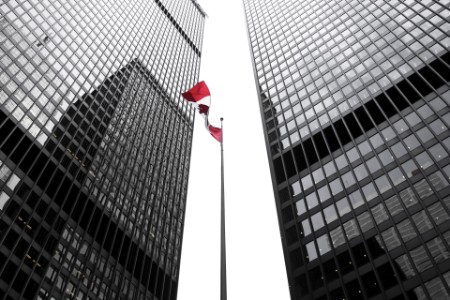
Employer obligation on deemed supplies made to pension and master pension entities
Tax Alert 2021 No. 34, 07 December 2021
Participating employers with a monthly Goods and Services Tax/Harmonized Sales Tax/Québec Sales Tax (GST/HST/QST) filing frequency must remit the GST/HST/QST liability on the deemed supplies made to certain pension entities and master pension entities by 31 January 2022. As such, it is important that employers obtain the relevant information required to report the tax in a timely manner. The respective pension entities will be ineligible to claim rebates to the extent that such amounts are not remitted on time.
Section 172.1 of the Excise Tax Act (the ETA) and sections 289.5, 289.6 and 289.7 of An Act respecting the Québec Sales Tax (the QST Act) deem participating employers to have collected GST/HST/QST on certain supplies made to pension entities and to master pension entities (collectively referred to as Pension Entities) on the last day of a fiscal year. As a result, employers that are required to remit GST/HST/QST on a monthly basis and that have a 31 December year-end must remit the GST/HST/QST amounts that are due with respect to the deemed supplies made to Pension Entities by 31 January 2022. Accordingly, a participating employer that is registered for GST/HST/QST purposes, with a monthly filing frequency, should include the tax in its GST/HST/QST return for the 1 December 2021 to 31 December 2021 reporting period.
A pension entity will not be able to claim its respective GST/HST/QST rebates on 33% of the tax paid to the extent that the participating employers either remit the GST/HST/QST collected in a subsequent return, or do not report and remit the GST/HST/QST collected as part of the December 2021 GST/HST/QST return.
In order to calculate the potential GST/HST/QST liability, employers must obtain the following data:
i. The fair market value of the property and services acquired by the employer for purposes of consuming, using or supplying them to Pension Entities. For example, this may include audit fees, actuarial fees, trustee fees and asset management services that are acquired by the employer.
ii. The total of the internal costs (e.g., labour, overhead costs) that are consumed or used for purposes of (a) making a supply of the property or service to Pension Entities, or (b) consumption in the course of “pension activities”. For example, the employer may have an employee that dedicates 50% of their time to address pension plan matters. The employer may calculate the GST/HST/QST obligation by using 50% of the employee’s compensation costs as a basis to determine its liability.
iii. The breakdown of the residency of the active members on a province-by-province basis.
iv. A province-by-province breakdown of the pension contributions made to the pension plan by the participating employer in respect of the participating employer’s employees.
It should be noted that some relief measures are available to employers that make a relatively small amount of deemed supplies to Pension Entities.
Other matters
- To the extent a participating employer acquires property or services for purposes of resupplying them to Pension Entities, it may be eligible to claim input tax credits.
- A participating employer may elect to deem certain actual supplies made to Pension Entities to have been made for nil consideration. This allows the employers and the Pension Entities to simplify compliance and to avoid double tax. Employers and Pension Entities should consider making this election by filing Form RC4615, Election or Revocation of the Election to Not Account for GST/HST on Actual Taxable Supplies.
- A qualifying pension entity is eligible to claim a rebate for 33% of the GST/HST/QST paid (including the tax deemed to have been paid under section 172.1 of the ETA and sections 289.5, 289.6 and 289.7 of the QST Act). Furthermore, some pension entities are also eligible to claim a rebate for the GST/HST/QST paid by master pension entities. The limitation period to claim rebates is two years. To the extent that the respective pension plans have not claimed their respective rebates, it is recommended they do so prior to the limitation period lapsing.
- A pension plan that is a selected listed financial institution (SLFI) for GST/HST/QST purposes may have additional tax obligations. Generally, a pension plan that has members residing in an HST province and any other province is an SLFI for GST/HST purposes, while a pension plan that has members in Québec and any other province will be an SLFI for QST purposes. There are some exceptions that apply if less than 10% of the members reside in HST provinces or Québec. There are also specific SLFI rules for master pension entities.
- To the extent that a Pension Entity is an SLFI for GST/HST and QST purposes or SLFI for QST purposes only, it must file Form RC7294, GST/HST and QST Final Return for Selected Listed Financial Institutions. If it is an SLFI for GST/HST purposes but not QST purposes, it must file Form GST 494, GST/HST Final Return for Selected Listed Financial Institutions. In either case, the form must be filed within six months of the Pension Entity’s calendar year-end. Therefore, the respective SLFI returns for the 2021 year are due by 30 June 2022.
Learn more
For more information, contact your EY or EY Law tax advisor, or one of the following professionals.
East
Jadys Bourdelais
+ 1 514 879 6380 | jadys.bourdelais@ca.ey.com
West
David D. Robertson
+1 403 206 5474 | david.d.robertson@ca.ey.com
Central
Jan Pedder
+1 416 943 3509 | jan.s.pedder@ca.ey.com
Sania Ilahi
+1 416 941 1832 | sania.ilahi@ca.ey.com
Tariq Nasir
+1 416 932 6143 | tariq.nasir@ca.ey.com
Budget information: For up-to-date information on the federal, provincial and territorial budgets, visit ey.com/ca/Budget.

